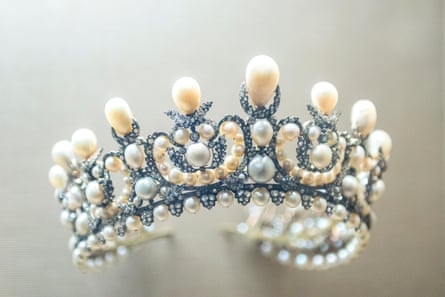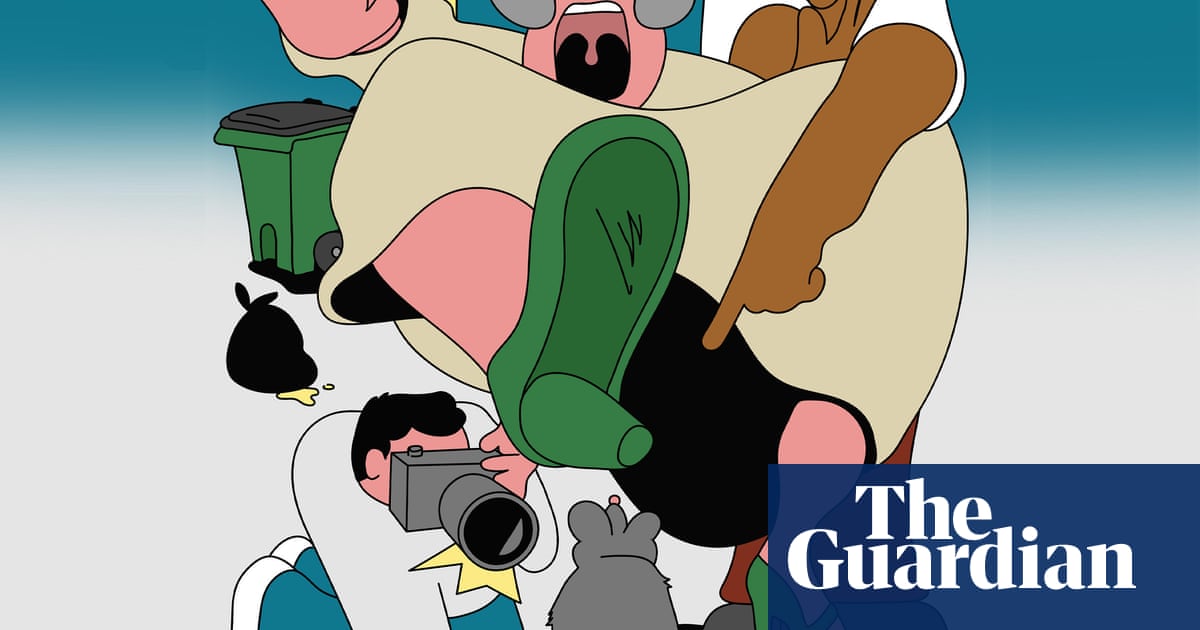I am furious. My instructions had been perfectly clear: break into the Louvre, head for the Denon wing and deliver me the Leonardo da Vincis. Instead, what did they do? Brought me trinkets! Stand there, over the trap door. A bit more to the right.
It would be nice to think an art collector supervillain somewhere was punishing the Louvre raiders for their moronic bad taste. Admittedly, security around the Mona Lisa has improved since it was last stolen in 1911, but the museum’s other Leonardos just hang on the wall like other paintings. And there is so much beauty, so many quiet galleries, scattered through this vast former palace: the thieves could have got out with a Chardin still life, a Rogier van der Weyden, an ancient Mesopotamian statuette.
Obviously I am glad they didn’t. My first reaction when I heard about the heist on Sunday morning was relief. This is such a treasury of art, but in a well-planned job the thieves used an extending ladder on a truck to enter the Galerie d’Apollon and grab a bunch of old royal knick-knacks. Despite breathless reports of the theft of “France’s priceless crown jewels”, this is scarcely like stealing the British crown jewels that symbolise our still-monarchical state. France hasn’t had royals in a long time so these are obscure relics.
Among the stolen items are a necklace and earrings that belonged to Marie-Amelie, wife of the 19th-century monarch Louis-Philippe and technically the last queen of France. After his reign ended in the 1848 revolution they were exiled in Britain and she died in Surrey in 1866. Then power was seized by Louis Napoleon Bonaparte, nephew of the original Emperor Napoleon. The thieves have also taken a tiara and brooch belonging to his wife, Empress Eugénie, who died in Madrid in 1920, 50 years after her husband was deposed.
Got all that? This is the kind of French constitutional history that gave me a headache as an A-level student. Even the stolen emerald necklace and earrings associated with the original, more exciting Napoleon belonged to his second wife, Marie Louise, not the renowned Josephine. I think the French culture minister must have had to suppress a snigger while claiming these items have “immeasurable heritage value”.

No, this is not about history, let alone art. It is about sapphires, emeralds and diamonds, and the gold and silver in which they are set. It doesn’t take an art detective to figure out that thieves who executed a robbery that ignored all the Louvre’s cultural treasures for these brainless items are ruthlessly interested in the precious materials from which they are made. Is this part of a new kind of “art” heist that isn’t about art at all?
The thieves who lifted Maurizio Cattelan’s golden toilet from Blenheim Palace in 2019 were not interested in Cattelan’s art (and who is, really?) but the gold which they were able to sell within days. The loo literally melted away into the inexhaustible market for precious metals. It seems all too likely the Louvre’s crown jewels will be broken up and their precious elements untraceably sold as anonymous jewels and metals, unless the crooks are caught first.
This is so much more practical than trying to sell a world famous artistic masterpiece. “Classic” art theft is irrational and doesn’t really work. When thieves took The Scream from the Munch Museum in Oslo they had no real idea what to do with it. The painting, as I was told by the Oslo police, was badly damaged by being kept in a wet van before its recovery. How could you really keep such an icon underground for long? The theft of Caravaggio’s Nativity by the Palermo mafia almost certainly resulted in this great work’s destruction into worthless fragments of canvas and pigment. But precious stones and metals carry on being precious.
It’s possible the thieves are not immediately planning to break up everything. Some of the royal jewels taken from the Green Vault in Dresden Castle in 2019 were recovered in Berlin in 2022. But the raid in Dresden – a city that houses artistic masterpieces such as Raphael’s Sistine Madonna and Giorgione’s Sleeping Venus – adds to the evidence that thieves are targeting precious gems and metals from museums rather than going to the bother of trying to profit from a famous painting.
Perversely this may be good news for guardians of the world’s great art. The Louvre will be looking at its security, but perhaps the real security of art lies in its ever increasing fame, when even lesser known sculptures and paintings can be looked up online instantly.
When Goya’s portrait of the Duke of Wellington was stolen from the National Gallery in 1961, the James Bond production designer Ken Adam wittily put it on the wall in Dr No’s lair, the joke being that only a Spectre supervillain might commission such a crime. The true story, involving a retired Newcastle bus driver, turned out to have its own peculiar romance. But anything romantic or underdoggish about art heists is a thing of the past. The thuggish crime at the Louvre suggests any interest in art by the underworld has been replaced by cold calculating greed. Art is fragile, they reckon. Diamonds are forever.

.png) 4 hours ago
3
4 hours ago
3

















































